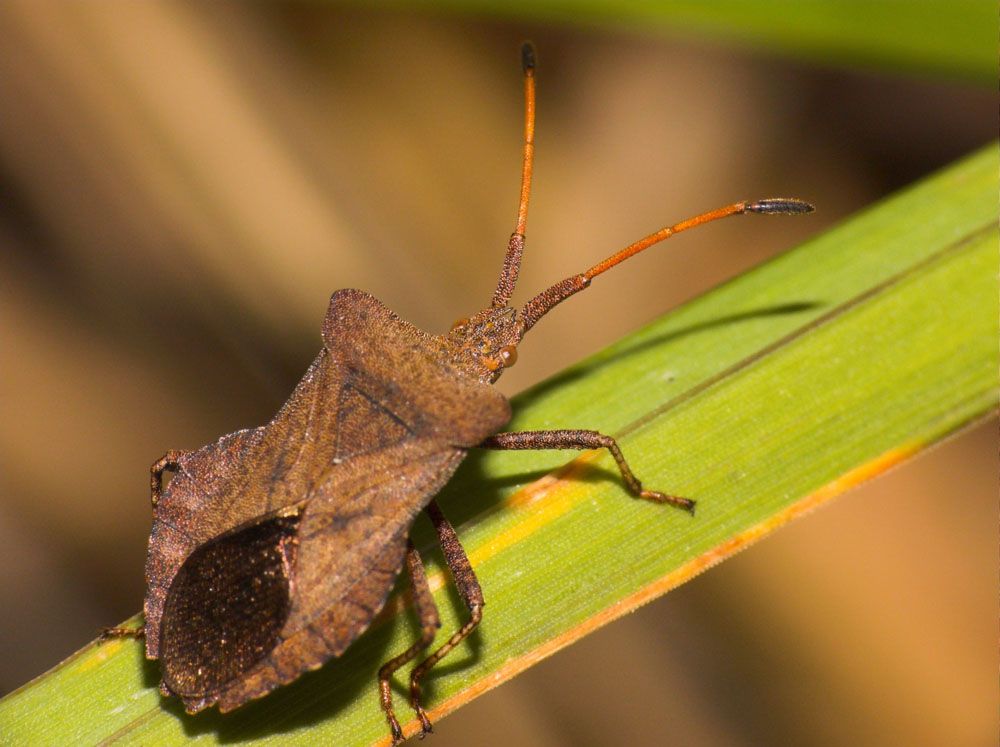
Squash Bug – Anasa tristus
Squash Bug: Appearance, Territory, Damage and Life
Latin Name: Anasa Tristis
Appearances: Adult squash bugs are 1/2 to 3/4 inch long, mottled brownish-black, and flattish, and gather in great numbers. When crushed, they emit a pungent odor. The heads and legs of immature squash bugs (nymphs) are red, and their bodies are whitish-green. Squash bugs lay gleaming copper eggs that hatch into voracious light green nymphs. Nymphs go through numerous phases before maturing to a gray-brown colour. Squash bugs are around 5/8 inch long as adults. Their dark, shield-shaped bodies contain gold and brown markings alternating along the borders of their abdomens.
Host Plants: Squash bug infestation affects all cucurbit vine harvests. In that order, the bugs favour squash, pumpkin, watermelon, cantaloupe, and cucumber. Squash such as hubbard, winter, and marrow are frequently affected. Symptoms: The nymphs and adults both feed by sucking plant juices.
Territory: Anasa tristis is a squash insect that affects cucurbits (squash and relatives) throughout Central America, the United States, and southern Canada. Squash bug coexists with other related species in the same genus over most of its range, eating on the same plants but causing far less damage.
Damage Caused: They eat anything from leaves to vines to fruit. Squash bugs are highly harmful, piercing plants in several locations and sucking the sap, causing vines and leaves to collapse. Furthermore, squash bug saliva contains germs that are harmful to cucurbit plants.
Life Cycle and Habits: The squash bug’s entire life cycle usually takes six to eight weeks. In northern climes, squash bugs have one generation per year, but in warmer climates, they have two to three generations per year.
When the vines on pumpkins and squash start to run, adults appear. Because their colour blends in with the soil and they are frequently hidden beneath vines, leaves, or clods of dirt, they might be difficult to spot. Adults feed on plant sap while laying clusters of brick-red to yellow-brown eggs on the lower surfaces of leaves, commonly at the angle produced by the leaf veins, or on stems. Until roughly mid-summer, eggs are deposited.
When squash bug nymphs first emerge from their eggs, they are green. For the first few days, they stay in groups. They grow for 4 to 6 weeks before reaching maturity, feeding on the sap of the plants. Nymphs of medium to big size turn grey or grayish-white in colour. By the end of the summer, new adults have emerged, and they may feed on the rinds of unripe fruit before relocating to protected areas for the winter. Each year, there is only one generation. Squash bug infestations cause the plant to quickly droop. As leaves die from severe injury, they become notably dark and crisp. Early in the growing season, little plants may be completely perished. Damage to specific leaves or runners on larger plants is possible.
